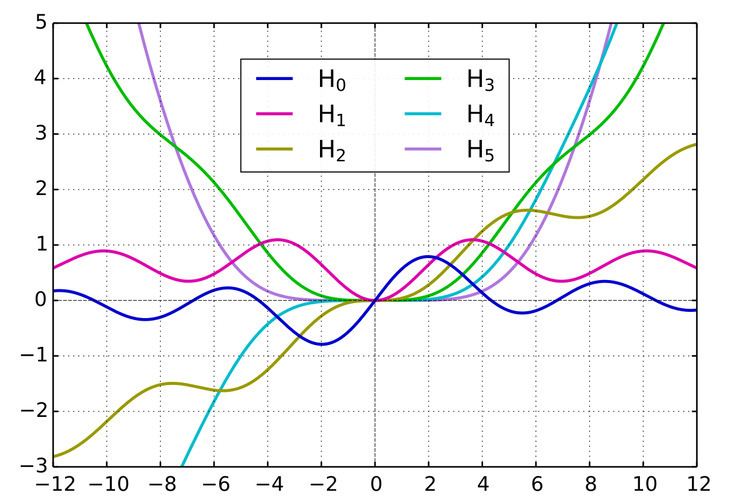 | ||
In mathematics, Struve functions Hα(x), are solutions y(x) of the non-homogeneous Bessel's differential equation:
Contents
- Definitions
- Power series expansion
- Integral form
- Asymptotic forms
- Properties
- Relation to other functions
- References
introduced by Hermann Struve (1882). The complex number α is the order of the Struve function, and is often an integer. The modified Struve functions Lα(x) are equal to −ie− iαπ/2Hα(ix).
Definitions
Since this is a non-homogeneous equation, solutions can be constructed from a single particular solution by adding the solutions of the homogeneous problem. In this case, the homogeneous solutions are the Bessel functions, and the particular solution may be chosen as the corresponding Struve function.
Power series expansion
Struve functions, denoted as Hα(x) have the following power series form
where Γ(z) is the gamma function.
The modified Struve function, denoted as Lν(z) have the following power series form
Integral form
Another definition of the Struve function, for values of α satisfying Re(α) > − 1/2, is possible using an integral representation:
Asymptotic forms
For small x, the power series expansion is given above.
For large x, one obtains:
where Yα(x) is the Neumann function.
Properties
The Struve functions satisfy the following recurrence relations:
Relation to other functions
Struve functions of integer order can be expressed in terms of Weber functions En and vice versa: if n is a non-negative integer then
Struve functions of order n + 1/2 where n is an integer can be expressed in terms of elementary functions. In particular if n is a non-negative integer then
where the right hand side is a spherical Bessel function.
Struve functions (of any order) can be expressed in terms of the generalized hypergeometric function 1F2 (which is not the Gauss hypergeometric function 2F1):
